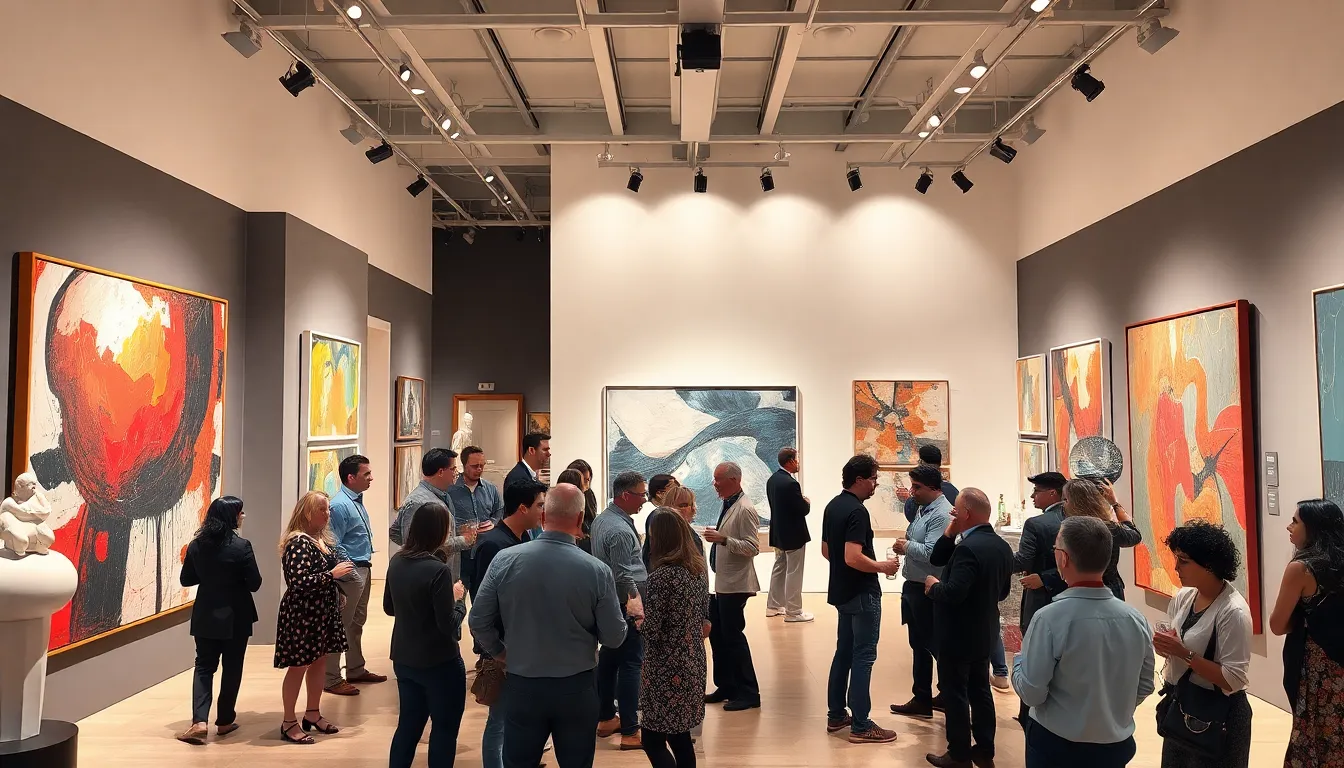In the world of modern art, where a splash of paint can fetch millions, it seems the canvas isn’t the only thing getting a makeover. Enter the intriguing realm of money laundering, where art becomes a clever disguise for questionable cash. Picture this: a Picasso hanging in a gallery, but behind its vibrant hues lies a web of financial intrigue that would make even the most seasoned detective raise an eyebrow.
As bizarre as it sounds, the art world has become a playground for the wealthy and the unscrupulous alike. With little regulation and a healthy dose of ambiguity, it’s the perfect backdrop for those looking to wash their dirty money. So grab your beret and prepare to dive into the colorful chaos of modern art money laundering, where the only thing more abstract than the art is the legality behind it.
Table of Contents
ToggleUnderstanding Modern Art Money Laundering
Modern art money laundering involves utilizing artworks to conceal and legitimize illicit funds. This practice exploits regulatory gaps in the art market, allowing individuals to engage in questionable financial activities.
Definition of Money Laundering
Money laundering refers to the process of making illegally obtained money appear legitimate. It typically occurs in three stages: placement, layering, and integration. During placement, the illicit funds enter the financial system. In layering, transactions occur to obscure the money’s origins. Finally, integration involves reintroducing the clean money into the economy. Art transactions can easily facilitate each stage due to vague regulations and the subjective nature of artwork valuations.
How Modern Art Plays a Role
Modern art serves as an ideal vehicle for money laundering with its high-value pieces often lacking clear provenance. Buyers assign inflated prices to artworks, creating a cover for illicit funds. Art dealers may also sell works through private sales, minimizing scrutiny. Auctions further enhance anonymity; bidders often remain unidentified, protecting their identities. Additionally, artworks can be transported internationally, allowing easy movement of assets across borders. This blend of high prices and minimal oversight makes modern art attractive for money laundering schemes.
Notable Cases of Art Money Laundering

Money laundering through modern art has seen several notable cases that underscore the issue. High-profile incidents reveal how individuals exploit the art market to conceal illegal funds.
High-Profile Incidents
The case of Yves Bouvier, a Swiss art dealer, stands out. Bouvier sold artworks to clients at marked-up prices, allegedly taking advantage of his connections. Another incident involves the Princeton University art program, where investigations revealed improperly valued donations linked to foreign donors. This case highlights how misleading valuations can mask illicit financial activities. Additionally, the 2016 scandal involving a New York-based gallery showcases the use of inflated prices to channel money from suspicious origins.
Emerging Trends in the Art Market
Emerging trends in the art market demonstrate a shift towards digital transactions. Online platforms facilitate anonymity, allowing buyers to acquire expensive pieces without clear provenance. Use of cryptocurrency also gains popularity, providing a further layer of secrecy in transactions. Auction houses adapt by reducing the information shared on sales, which complicates the traceability of assets. The ongoing move towards private sales strengthens the likelihood of money laundering, as it bypasses traditional scrutiny associated with public auctions. These trends together create an environment ripe for illicit financial activities within the modern art sphere.
The Impact on the Art World
Modern art money laundering significantly influences various aspects of the art market. The ramifications extend to artists, collectors, and the overall integrity of the industry.
Effects on Artists and Collectors
Artists often face challenges in a market where their work can be used for laundering purposes. Some may experience decreased trust from potential buyers, as collectors become wary of the implications of their purchases. Collectors, in turn, risk facing legal scrutiny if they unknowingly buy artworks linked to illicit activities. These factors can diminish an artist’s reputation and value, impacting the overall market dynamics. Moreover, collectors may prioritize transparency, seeking verified information about artworks’ provenance to mitigate risks associated with high-value pieces. This shift influences how artists present their work and engage with the market.
Legal and Ethical Implications
Legal ramifications arise due to money laundering activities within the art world. Regulators face challenges in enforcing compliance, as many art transactions lack oversight. Ethical concerns compound this issue, as artists and collectors must navigate a landscape fraught with potential illegitimacy. The absence of stringent laws allows questionable practices to persist, undermining the credibility of the art market. Artists may strive for authenticity while collectors become increasingly vigilant about their purchases. Art institutions must also adapt to this evolving landscape by establishing guidelines that promote transparency and ethical standards. Compliance with these standards will likely enhance public trust, rebuilding confidence in the art world.
Preventative Measures and Regulations
Preventing money laundering in the modern art sector requires focused regulations and vigilant art institutions. Legal frameworks must adapt to address the unique challenges posed by the art market.
Current Legal Framework
Countries like the United States and the United Kingdom implemented anti-money laundering (AML) regulations for art dealers and auction houses. In 2021, the Financial Action Task Force (FATF) issued recommendations requiring art market participants to comply with their Know Your Customer (KYC) guidelines. These guidelines demand enhanced due diligence, particularly in high-value transactions. Enforcement remains inconsistent, as many art dealers and galleries exploit regulatory gaps. Consequently, the lack of comprehensive legislation in various jurisdictions hampers the efficiency of these measures. Without strict compliance, it remains challenging to trace the origins of funds related to art transactions.
Role of Art Institutions
Art institutions play a critical role in maintaining integrity within the market. They can establish clear policies promoting transparency and ethical standards for transactions. Collaborations with law enforcement enhance their effectiveness in monitoring financial practices. Many institutions now provide training for staff on recognizing signs of money laundering, which fosters awareness and encourages reporting suspicious activities. Additionally, museums and galleries highlight the importance of provenance research, guiding collectors toward verified artworks. Such initiatives not only protect the credibility of institutions but also bolster public confidence in the art world.
The intertwining of modern art and money laundering presents significant challenges for the art market. As the industry grapples with regulatory shortcomings and ethical dilemmas, the need for transparency becomes increasingly urgent. Art institutions and collectors alike must prioritize due diligence to safeguard against the implications of illicit financial activities.
By fostering a culture of accountability and implementing robust guidelines, the art world can work towards restoring trust and integrity. As awareness of these issues grows, the future of modern art hinges on its ability to adapt and evolve in the face of these pressing concerns.









